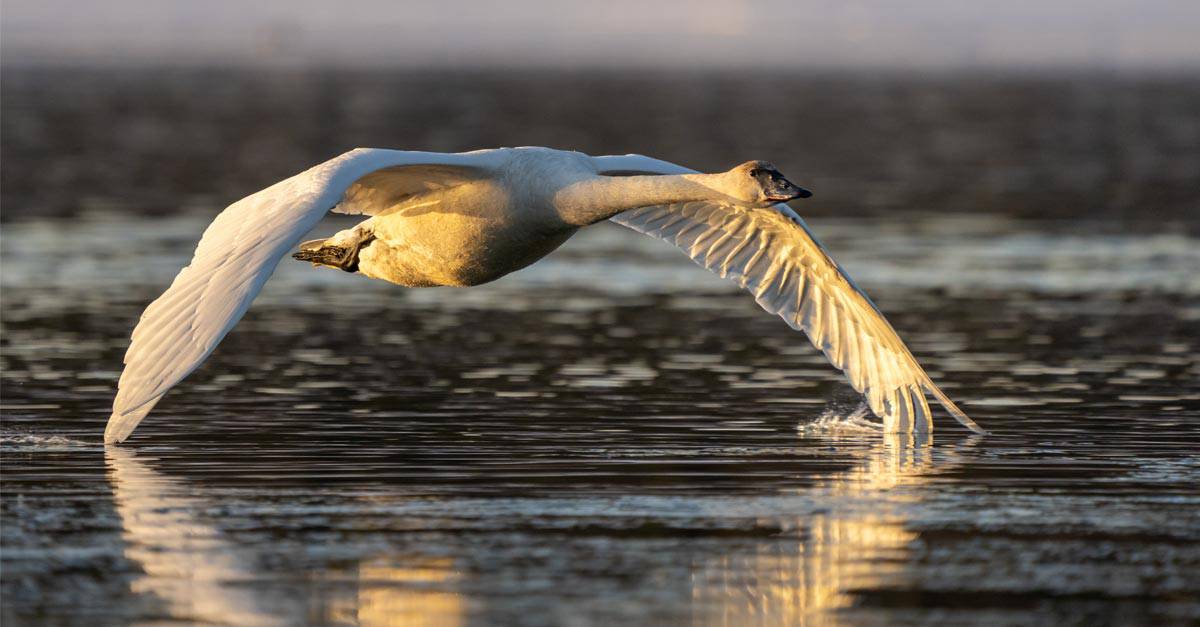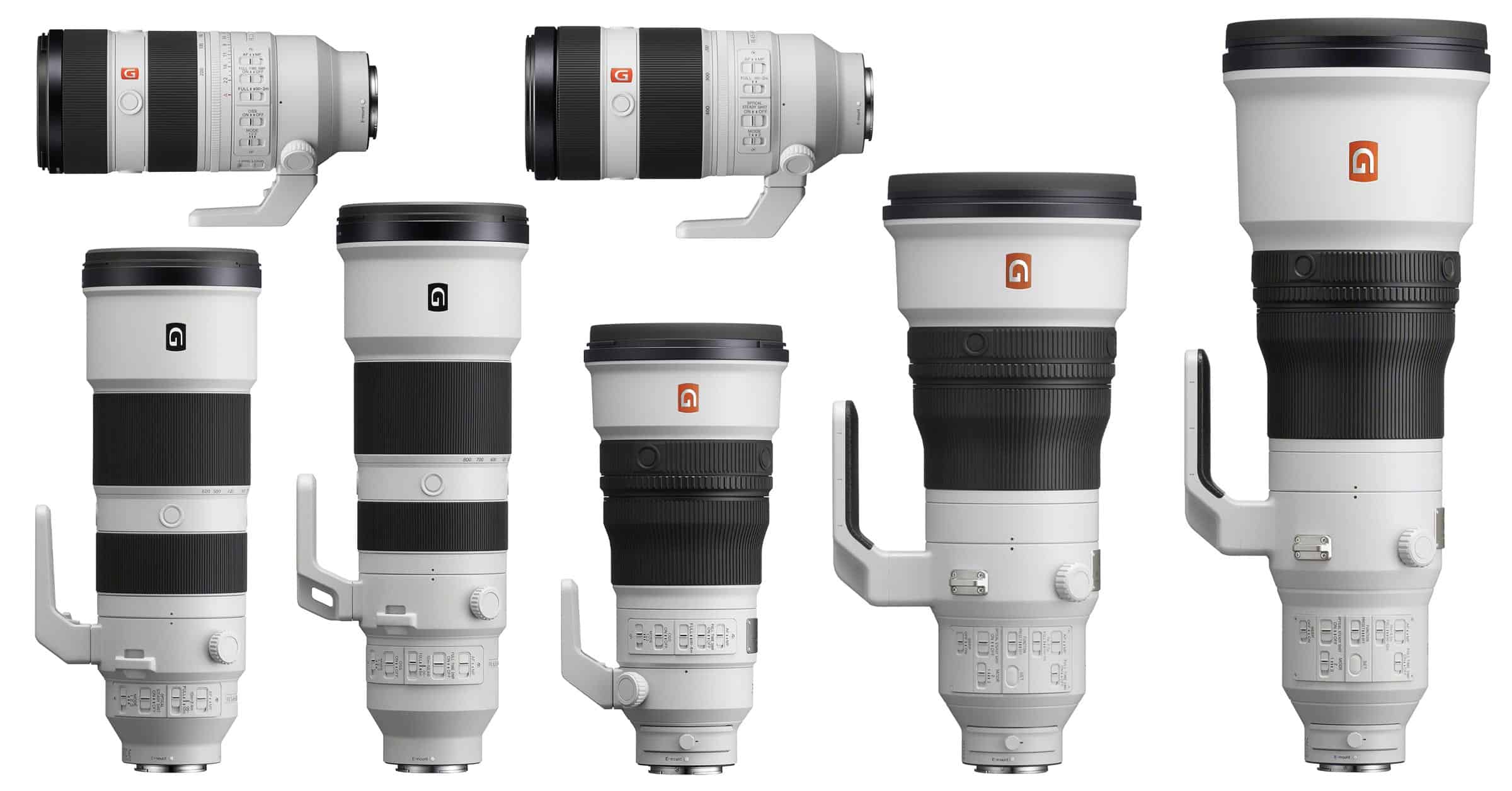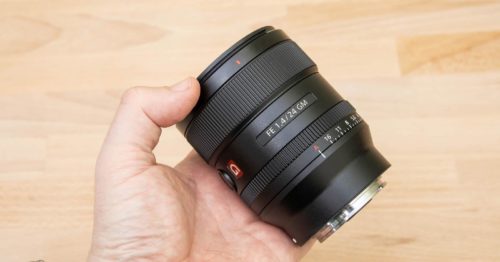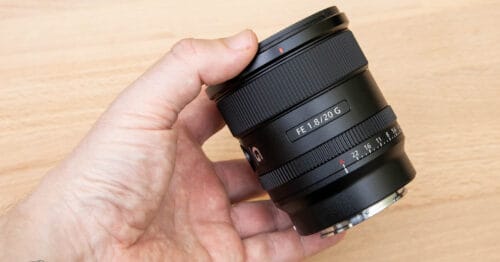The list of features in Sony’s flagship a1 are extensive, but one of the standouts for me is the addition of a dedicated bird eye autofocus system. Before the a1 came along, Sony’s most recent mirrorless cameras had an Eye AF mode that was switchable between human and animal. Real-time human eye tracking is and has been for some time, almost uncannily accurate. Real-time animal eye tracking is truly excellent with land mammals. Can the new Bird Eye AF mode live up to standards set by the existing eye-tracking modes?
I purchased my Sony a1 at a regular retail store. Although I got my hands on one of the first in Canada, there were still many journalists and Sony Artisans that had their hands on an a1 before me. Every time I saw a report posted, I would look for some information on the bird eye autofocus mode, keen to see whether it was going to live up to the existing high bar, and the hype during the a1 launch.
What I found was a mixed set of opinions. Tony Northrup published an initial video about the a1 where he said that bird eye AF was somewhat mediocre. But others, such as Sony Artisan Chris Dodds was saying it was truly excellent. Was this just a case of Sony sponsored shooters blowing smoke? In the end, I decided I was only going to be able to answer this question with some hands-on time.
Real-Time Eye AF for Birds – Impressions
All of the images on this page were shot with my own Sony a1, along with the excellent Sony 200-600mm f/5.6-6.3 G lens.
Real-Time Eye AF Subject Switching
In most situations I leave Eye AF turned on in my Sony cameras, then I switch the subject as needed. Even if there are no eyes in the photo, such as when photographing landscapes, autofocus still works just fine. With my a9 II camera, I only had to switch subjects between human and animal, which I usually did with a custom setting in the menu system.
With the a1, I quickly realized that this was no longer going to be the most efficient way to work. In a wildlife-rich environment, you might want to repeatedly switch quickly between animal and bird eye AF modes. To fix this problem, I assigned real-time eye AF subject to one of the custom buttons on the top of the camera, next to the shutter button. C1 or C2 will work fine for this. Now, with my eye to the viewfinder, I can quickly switch eye AF modes, cycling through human->animal->bird.
Living as I do in the Yukon, I like to keep a camera next to me when I’m driving anywhere. You never know what kind of wildlife is going to pop out in front of you. When it does appear, you might have only a few seconds to get a shot. Without having a custom button to switch eye AF subjects, you could easily find yourself in the wrong mode and wasting valuable time diving into the menus to fix it.
This is all less of a problem if you only shoot people. In which case you can leave the eye AF subject set to human. If you like to shoot wildlife, though, you will find yourself wanting to switch back and forth between animal and bird subject mode constantly. Honestly, I wish Sony had simply added birds to the real-time animal eye AF mode instead of giving it a separate mode. Let’s hope we don’t see more modes added in the future with increasingly granular subjects. Fish eye AF mode, anyone?
Does it Work?
Once I had the setup dialled in, I was very pleased to see excellent initial results with the bird eye tracking. While working on photos for my guide to backyard bird photography, I spent many hours in a photo blind in my yard, giving me ample time to draw some initial conclusions.
Honestly, after my first few hours working with it, I was blown away. Working with very small birds it would consistently pick out and lock onto an eye with just the same accuracy as I had seen when using the human or animal eye AF modes on my older a9 II. As birds would sit on a perch and turn their heads left to right, so the eye-tracking box would jump instantaneously to the opposite eye as it became visible. Sometimes it feels like cheating, it is that good.
Does Bird Size Affect Accuracy?
Having seen at least one of the Sony pros testing the bird eye AF mode on larger birds such as owls and eagles, I was curious whether the size of the bird would affect accuracy. Having now worked with the a1 for several months, I can categorically state that the size of the bird has absolutely zero effect on the AF accuracy. It remains just as accurate with small songbirds as it does with larger raptors.
But what about size within the frame? This was a surprise to me. I had expected to see far greater accuracy when a bird occupies a larger proportion of the frame. However, in practice, I saw no such results. I was constantly astonished to see the eye-tracking box appear on the eye of a tiny bird that occupied a tiny portion of the frame. The more I used it, the more comfortable I began to be with using a much larger autofocus area in the frame. Confident that the system would still pick out the eye.
Does Bird Eye Contrast Affect Accuracy?
My assumption before using this system was that it would be considerably more capable of picking out high contrast eyes. For example, I expected it to have little trouble finding a black eye on a white bird, but for it to have issues picking out a black eye on a dark bird. Again, I was wrong with my preconceptions here. I didn’t see any particular issues with darker birds, or birds with dark eyes within dark-feathered heads.
Does Bird Angle to Camera Affect Accuracy?
What about bird angle to the camera? The eye of a bird looks very different when the bird is facing the camera. Can the a1’s bird eye AF mode still pick it out and lock on? The short answer is yes. The slightly longer answer is that sometimes it takes a little longer, and jumps from one eye to the other when both are visible.
Small birds are usually twitchy, constantly moving their heads left to right. When a small bird is facing you, moving its head, you will see the tracking box jump from one eye to the other as the camera tries to decide which one to prioritize. In reality, this doesn’t really matter. Both eyes are roughly in the same plane of focus and it makes no difference which one it chooses.
Honestly, I was just impressed to see it working at all because the AI system must surely have a tougher job with this scenario. A bird can look distinctly un-bird-like when viewed from the front, instead of the side. Yet the system would repeatedly surprise me, and allow me to capture fabulous moments like the one above.
Does Bird Breed Affect Accuracy? – Uh Oh…
The title of the post did say I was going to tell you the good and the bad. So far it has all been good. Very good, in fact. But here we do get to the bad. When photographing the annual swan migration here in the Yukon, the bird eye AF completely failed. Every time.
I’m not saying it struggled, and sometimes missed focus. I’m saying that it completely, 100% failed to establish that a swan was a bird. It didn’t matter whether I was filling half the frame with the swan’s head, making the eye obvious and enormous, it simply did not recognize a swan as a bird. Instead of seeing the magic green eye-tracking box appear over the eye, it would think for a second and then default back to standard AF tracking modes.
This was disappointing. Clearly, the AI system that analyzes the subject within the frame, has been programmed with many different bird photos. But what Sony has done, is concentrate on more common regular bird shapes. The system seems to have no trouble with big raptors and small songbirds. Nor does it have any issue with a swimming duck that has its feet submerged. Thus proving that it doesn’t necessarily need to see the whole bird, to establish that it is, in fact, a bird.
It seems that Sony forgot, or at least has not yet gotten around to, programming the bird eye AF system with long-necked birds. I have only tested this theory with swans, but I would guess that it would struggle in the same way when faced with something like an ostrich or a flamingo.
Conclusion
The real-time-bird eye AF on the Sony a1 is a lot better than I was expecting it to be. With the vast majority of birds, it does a frankly incredible job of finding an eye within the entire frame and locking onto it wherever the bird moves. At times, it felt like I was cheating, and it certainly helped me to get a larger proportion of sharper images than I had previously experienced with my Sony a9 II or any other camera for that matter.
For wildlife photographers, this is a big step in the right direction, but it’s not perfect. At the moment the AI system that analyzes the subject in the frame has not been fed with enough information about non-standard bird shapes. It will fail if you point it at a long-necked bird like a swan, for example. I’m sure that Sony’s next firmware update will add some more “knowledge” to the bird AI in the a1, but for now, this is something to consider.
That said, if you happened to love photographing swans (or similarly shaped birds), you are in no worse of a position than you were before the a1 when there was no bird eye autofocus mode. And, as you can see from my images, you can still get great photos of these birds using the incredible standard tracking AF mode.
Finally, I would like to see Sony roll the bird eye tracking into the animal eye tracking mode. I’m guessing that for now, having it separated speeds up the AI analysis of the subject. But it can be a pain in the ass for a wildlife photographer who finds themselves in a subject-rich environment, constantly having to switch back and forth between bird and animal subject mode. If you find yourself presented with a chance encounter, it’s easy to raise the camera to your eye with the wrong subject selected.



















Useful results – thanks.
But does the A1 produce small bird portraits that the A9 can’t?
And how does it fare with BIFs?
It’s much easier to get a sharp-on-the-eye photo with the a1 and a small bird, compared to the a9. With BIF, there is a marginal improvement over the a9 II.
Hmmm. Somewhere I read Sony mentioning that Pelicans were difficult. So far I love bird and animal eye af.
Another great article, Dan.
Pelicans! Yes that wouldn’t surprise me. They are definitely not a standard shape. I’m sure they will eventually get around to programming these extra birds…
Thanks for the fine article, Dan. Do you (or anyone else reading this) have any experience and resulting opinions about the dual-pixel AF system in Canon’s new R5 mirrorless camera, which also incorporates “Animal AF” with tracking (and is said to have excellent “bird-eye” AF nested within the “Animal AF” mode, exactly as you wish the A1 had)? I’ve read a few reports of this new Canon AF system performing remarkably well, including with birds, although, as with the Sony A1, I’ve previously found no reports deep-diving into BIRD AF performance, per se. AS A PASSIONATE BIRD PHOTOGRAPHER, I’D REALLY APPRECIATE HEARING ABOUT ANYONE’S PERSONAL, ACTUAL EXPERIENCE USING CANON’S R5 CAMERA TO PHOTOGRAPH BIRDS. Thanks…
Hi Marcus. I don’t have the same experience with the R5. You might want to dive into Art Morris’ blog. I know he has used the a1 and R5 extensively for birds and might have some side-by-side thoughts.
Good post Dan. Thanks. How’s your Sony gear holding up in the rough and tumble environment of the Yukon?
No problems at all. The days of Sony gear being fragile are long gone. I have as much confidence in this kit now as I ever did with Canon pro gear.
Thanks Dan. Long time Nikon shooter here who has been looking into the Sony gear, so was curious how durable they are when used in more harsh environments.
You are welcome.
I recently photographed a blue heron as it flew across the river, landed near me, got spooked and flew back across the river. Over 100 shots, bird eye autofocus locked on perfectly for the entire sequence. Herons are a bit oddly shaped, especially in flight. The A1 has no problem with detecting herons’ eyes in closeups either.
Good to know. I guess it can do herons!
Dan
I have attached Human/Animal/Bird setting to a custom button,. When I press the button it cycles thru the three choices. It does not give you a choice of all three, but it cycles thru the three. I have the one I want with a maximum of pressing the button twice. Works for me.
Michael
Hi Michael. Yes, that was the suggestion I made in the post. Am I missing something here?
Hi I have a question for you. I have the A7iii and shoot birds mostly. Find myself wanting the A7VI due to the birdeye-focus. BUT…. When your in a boat and fishing, and you have an automatic fishfinder and then drop down the angler you expect to catch that fish.. on the other hand when you fishing without a fishfinder the trill and exitment you feel when the fish suddenly hook on!
When you shoot with birdeye-focus you expect all the shots to be in focus..
So the big question: Do you have the same good feeling now coming home to your big screen to see what you capture then before when you had to work harder to get the bird in focus?
I don’t think bird eye AF ruins anything. There is still considerable skill required to get the AF box over a fast-moving bird in the first place. All this does is free up a little more of your in-the-moment awareness to enable you to more easily concentrate on framing and composition.
I’m not a fisherman, but perhaps you could liken it to knowing that you have the right bait or lure? You have put yourself in the best place to catch a fish and given yourself one less variable to worry about, but you still need to exercise some skills.
Dan, I just recently received my a9II and have been a little disappointed in the focusing agility of the camera. That said I may have the camera settings out of whack. I took the advice of my friend (a former AP staffer) on how he set up his autofocus and I have it set to animal eye. I haven’t seen it lock on yet. In the woods of my backyard I deal with small southeastern US birds. I’m really hoping I’m doing something wrong because the 200-600 and Sony sensor are great. The silent shutter means the birds aren’t spooked like they were with my Nikon gear….that said….I’m disappointed I have yet to see the focus work on a bird in flight. Mildly disappointed at this point but the more I used the camera the more I like it and I was a Nikon guy for 47 years. Great column and thanks for any tips.
Hi Chuck. The a9 II does not have bird eye AF mode, only “animal eye”. I think that the animal eye AF mode is somewhat limited to large mammals and not designed to work with birds. So I think the main issue you are having is that you are currently telling the camera to look for a big mammal while pointing it towards some birds. You will have better luck turning off all of the eye AF modes and just using regular continuous AF tracking modes. When I owned the a9 II and used it with the 200-600 I had great success.